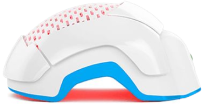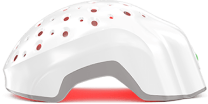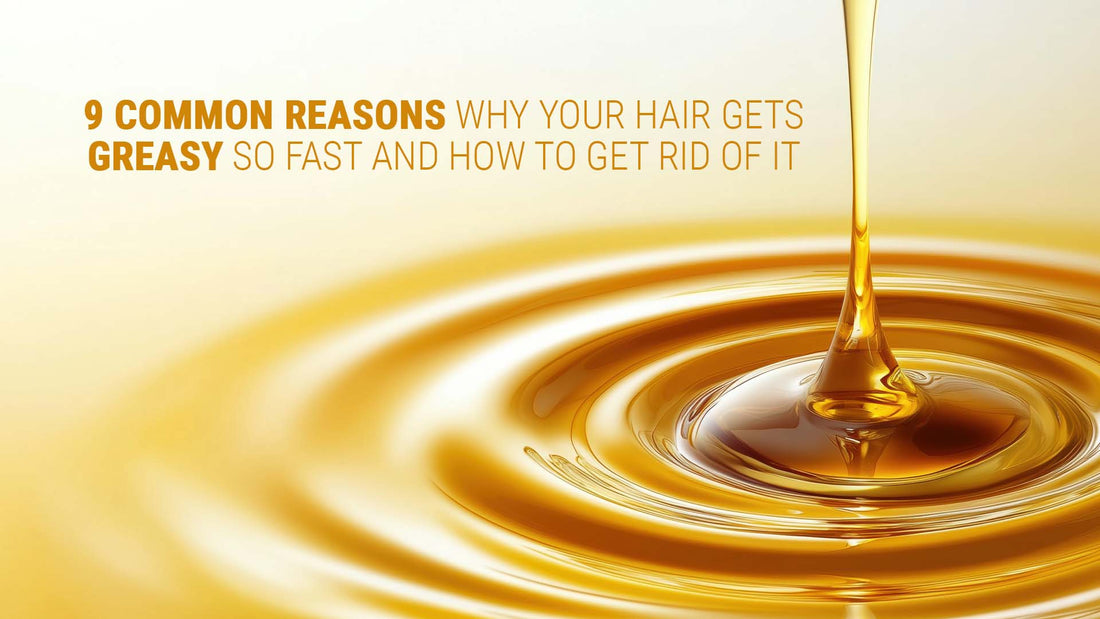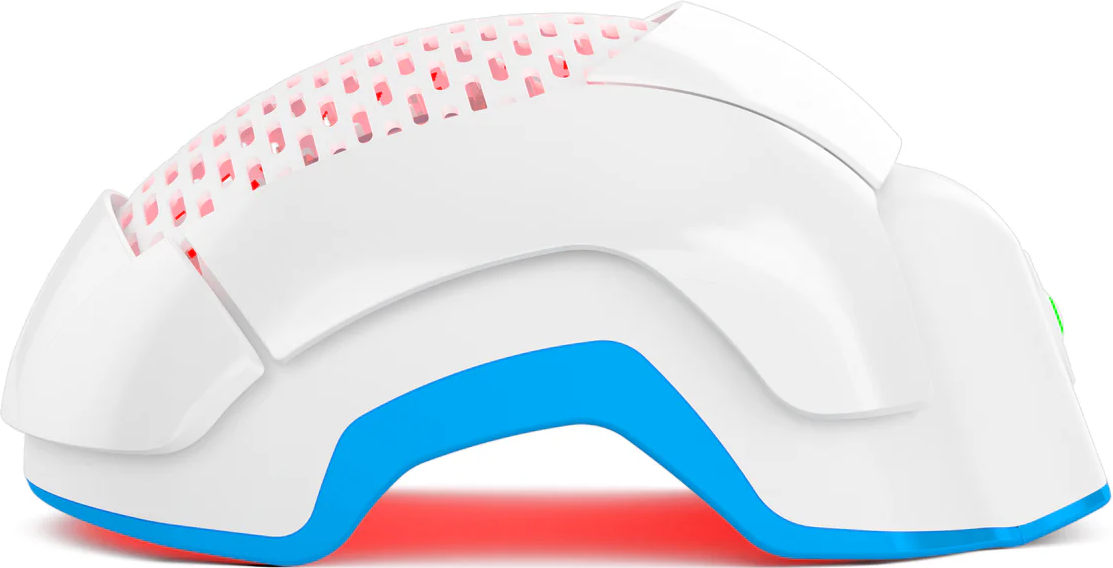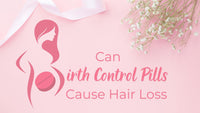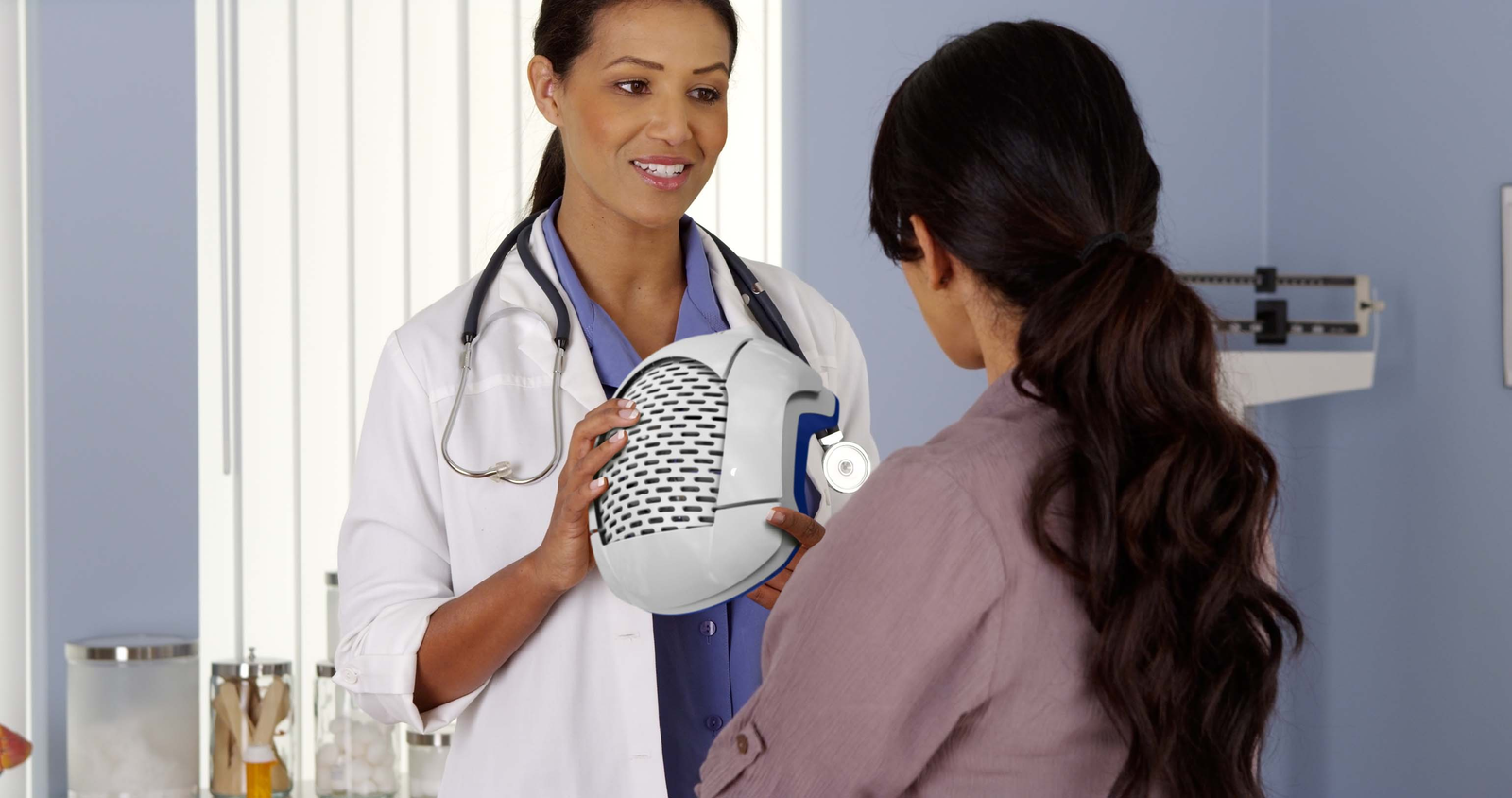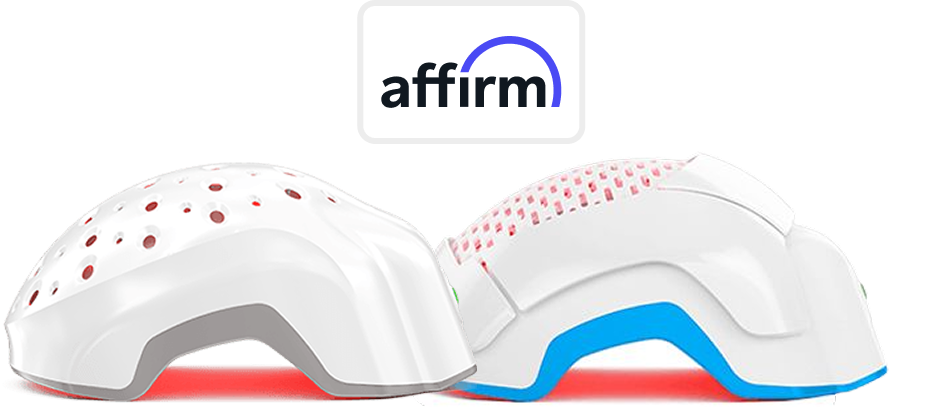Greasy hair can ruin off your whole day. You wash it in the morning, and by lunchtime, your roots are already oily again. You might wonder, "Did I not clean it well enough? Did I use the wrong shampoo? or Do I have naturally oily scalp?". The truth is, it’s not just about how often you shampoo. Your hair type, styling habits, lifestyle, and even the products you use all play a role in how quickly that greasy buildup appears.
Greasy hair happens when your scalp’s sebaceous glands produce too much oil, but factors like your hair type, hormones, and daily habits can make it worse. Some of the things you’re doing now might actually be making your hair oilier without you realizing it.
The good news? Greasy hair isn’t something you have to live with forever. Once you understand what’s behind it, you can take steps to fix it. The key isn’t just washing more often that can actually backfire but finding the right balance to control your scalp’s oil production so your hair stays fresh longer.
Let’s break down the real reasons behind greasy and oily hair and how to get it under control without becoming hooked on dry shampoo.
What is the Grease on Your Hair?
Greasy hair isn’t just about skipping washes or using the wrong shampoo. It’s the result of overactive sebaceous glands. These glands produce sebum, the natural oil that keeps your scalp and hair healthy. But when they over-produce sebum, excess oil buildup make your hair look greasy quick and fast.
Sometimes, things you do without thinking, like touching your hair a lot or over-washing, can actually make it more oily. And no, shampooing more isn’t the fix. In fact, it might make things worse by stripping your scalp’s natural oils and causing it to produce even more oil to make up for it.
Some people produce more sebum naturally, while others trigger oil overproduction without even realizing it. The key is knowing which factors are working against you and how to balance them.
However, greasy or oily hair isn’t permanent. Once you figure out what’s triggering the excess oil, you can make small changes that help balance your scalp’s oil levels.
What Does Greasy Hair Look Like?
Not sure if your hair is excessively greasy or just needs a wash? Here’s what to look for:
- Hair looks flat, stringy, and limp within a day of washing.
- Your scalp feels oily or sticky when you touch it.
- You notice a persistent itch or product buildup near your roots.
- Your hair attracts dust, dirt, or pollution easily.
- Dry shampoo stops being effective because the oil is overwhelming it.
What Causes Hair to Get Greasy So Fast?
There’s no single culprit for greasy hair, it's usually a combination of factors. Below are the common causes for making your hair look oily and greasy way too soon.
1. Hair Type
Your natural hair type plays a major role in how quickly your hair appears greasy. The shape, texture and thickness of your hair strands affect how sebum travels along the hair shaft:
- Straight hair spreads sebum faster. Because straight strands provide a smooth path, sebum easily coats the entire length of the hair, causing an overall oily appearance.
- Curly hair retains sebum on the scalp. The twists and bends in curly and coily hair prevent sebum from traveling down the shaft, which can lead to a greasy scalp while leaving the hair lengths dry.
- Fine hair strands have less surface area to absorb oils which amplifies greasiness. Thin strands are quickly coated with sebum, making fine hair types especially prone to looking oily even when freshly washed.
2. Not Washing Your Hair (Or Washing Too Much)
Both infrequent washing and overwashing can lead to greasy hair. The goal is to strike a healthy balance.
- Not washing enough: When you skip hair wash for too long, sebum and environmental debris accumulate on the scalp and hair, causing obvious oiliness and potential scalp odor.
- Overwashing: Washing your hair too often strips away natural oils. In response, your sebaceous glands may increase oil production to compensate for the loss of natural oils after washing your hair. This leads to even greasier hair over time.
3. Exercise and Sweating
Physical activity and sweating significantly contribute to greasy hair. Generally, sweating is considered good for hair growth but it can make your hair greasy. Sweat itself is mostly water and salt, but when it mixes with sebum and environmental dirt, it can make hair look greasy and feel sticky.
Frequent exercise, hot yoga, or outdoor sports may require adjusting your washing routine. Consider rinsing hair with cold or lukewarm water after workouts and use a scalp-refreshing spray or dry shampoo between washes.
4. Styling Habits
Certain styling practices can contribute to greasy hair.
- Heavy products: Using heavy styling products like gels, waxes, and silicone-based serums can build up oil and dirt on your hair.
- Tight hairstyles: Ponytails, braids, or buns can restrict airflow to the scalp, increasing sweat and oil buildup.
- Heat styling: Excessive heat styling can stimulate sebaceous glands, leading to faster oil production.
- Dirty hairbrush: If your hairbrush is full of oil, dead skin, and leftover products, it’s just reapplying all that gunk back onto your hair.
To mitigate these effects, opt for lightweight, non-comedogenic styling products and give your scalp time to breathe.
5. Wrong Shampoo and Conditioner
Choosing the wrong shampoo or conditioner can disrupt your scalp’s oil balance. Some formulations in shampoos may be too harsh, while others may be too heavy.
Sulfate-heavy shampoos can strip the scalp, triggering the overproduction of oil. Similarly, rich and creamy conditioners applied too close to the roots can leave a residue that weighs hair down. Meanwhile, hydrating shampoos and conditioners meant for dry hair can overload your scalp if you’re already prone to greasiness. Choosing the right formula is everything.
6. Touching Your Hair Frequently
Touching your hair with your hands transfers oils, dirt, and bacteria from your skin to your hair strands. This not only spreads natural scalp oil faster but also adds external oils. So, avoid running your fingers through your hair repeatedly and over-brushing too.
7. Hormonal Imbalance
Hormones directly influence how much sebum your scalp produces. Androgens (male hormones such as testosterone and DHT) stimulate sebaceous gland activity. When these hormones fluctuate, so does oil production.
Common life stages and events that can trigger hormonal imbalances and greasy hair include:
- Adolescence: Increased androgens during puberty often cause oily skin and hair.
- Pregnancy: Hormonal shifts during pregnancy can either increase or decrease sebum production.
- Menopause: Reduced estrogen relative to androgens can lead to greasier hair in some women.
- Stress: Elevated cortisol levels due to stress can indirectly increase androgen activity, contributing to oily scalp conditions.
8. Washing Hair with Hot Water
Using too hot water for hair washing can stimulate sebum production on your scalp. So, try to avoid hot water baths and wash your scalp with cool water.
9. Environmental Factors
Environmental factors like humidity and pollution can make your hair feel oily and greasy by accumulating dirt and surrounding moisture.
How to Get Rid of Greasy and Oily Hair?
Good news: You don’t have to suffer through an endless cycle of washing, greasing up, and rewashing. Here’s how to keep excess oil in check and fix your greasy hair.
1. Wash Hair Frequently—But Not Too Often
Washing 2-3 times a week is usually enough to keep grease under control. But if you have super oily hair, washing every other day might be necessary. Just don’t wash daily unless absolutely necessary. Additionally, following a good hair care routine can help fix greasy hair.
Recommended washing frequency for different hair types:
- Fine/straight hair: Every 2–3 days
- Wavy hair: Every 3–4 days
- Curly/coily hair: Once per week
2. Choose the Right Shampoo and Conditioner
A sulfate-free clarifying shampoo gently cleanses the excess oil without stripping your scalp. Avoid heavy, moisturizing formulas made for dry hair, and stick to lightweight, non-comedogenic products that are specifically made for oily roots.
Look for pH-balanced shampoos (pH 4.5–5.5) that support scalp health. Apply conditioners designed for your hair type, primarily to the mid-lengths and ends, not the scalp.
3. Avoid Excessive Use of Styling Products
If you’re using heavy creams, serums, or waxes, they might be making things worse. Stick to lightweight, non-greasy formulas to avoid excessive buildup.
4. Rinse Hair After Exercise
No time for a full wash? A quick water rinse after workouts can help prevent sweat from spreading sebum all over your hair.
5. Clean Your Hair Brush & Comb
A dirty brush spreads old oil and product back onto your hair. Wash your brushes and combs weekly to prevent grease from making a comeback.
Ingredients to Look For and to Avoid
If you are dealing with oily roots, selecting the right ingredients in your hair care products is crucial for maintaining a balanced scalp without exacerbating the issue. Here’s a deeper look at the recommended ingredients, as well as those you should avoid:
What to Use for Greasy Hair
- Salicylic Acid: This ingredient breaks down oil buildup that makes your hair look greasy and gently removes dead skin and excess sebum from your scalp, giving you a fresh, clean feeling that lasts longer.
- Tea Tree Oil: Tea tree oil contains natural antibacterial properties that help keep your scalp clean while controlling oil production.
- Witch Hazel: It is a natural astringent which helps to tighten the skin and reduce oil production on your scalp. Its calming properties can also help with inflammation and itchiness.
- Green Tea Extract: It is rich in antioxidants that help regulate your scalp's oil production from within, creating a healthier environment for your hair follicles while reducing unwanted shine and greasiness.
What Makes Greasy Hair Worse
- Heavy Oils: Ingredients like coconut oil and argan oil might be good for your hair, but they can be too heavy if you have naturally oily scalps. These can weigh your hair down while adding even more oil to an already greasy situation.
- Silicones: Silicones can make your hair smooth and silky, but they create a coating that traps oil and product buildup on your scalp, leading to that heavy, greasy hair that's hard to wash out with regular shampoo.
Learn more about the ingredients present in hair products that can harm your hair health.
By carefully choosing products with these considerations in mind, you can effectively manage oily roots while keeping your hair healthy and vibrant. Remember, the key is to balance oil production without stripping your hair of its natural moisture.
Conclusion
Greasy hair is frustrating, but it’s not a life sentence. The trick is to find a routine that balances oil production without overdoing it. Washing hair too much or too little can both backfire, using the wrong shampoo will sabotage your scalp, and touching your hair too often only makes things worse.
Control these factors followed by a proper hair care routine, and your hair will finally stop looking like it was deep-fried before noon. The goal isn’t to eliminate sebum altogether, it’s to keep it in check so your hair looks fresh, healthy, and grease-free for longer.


